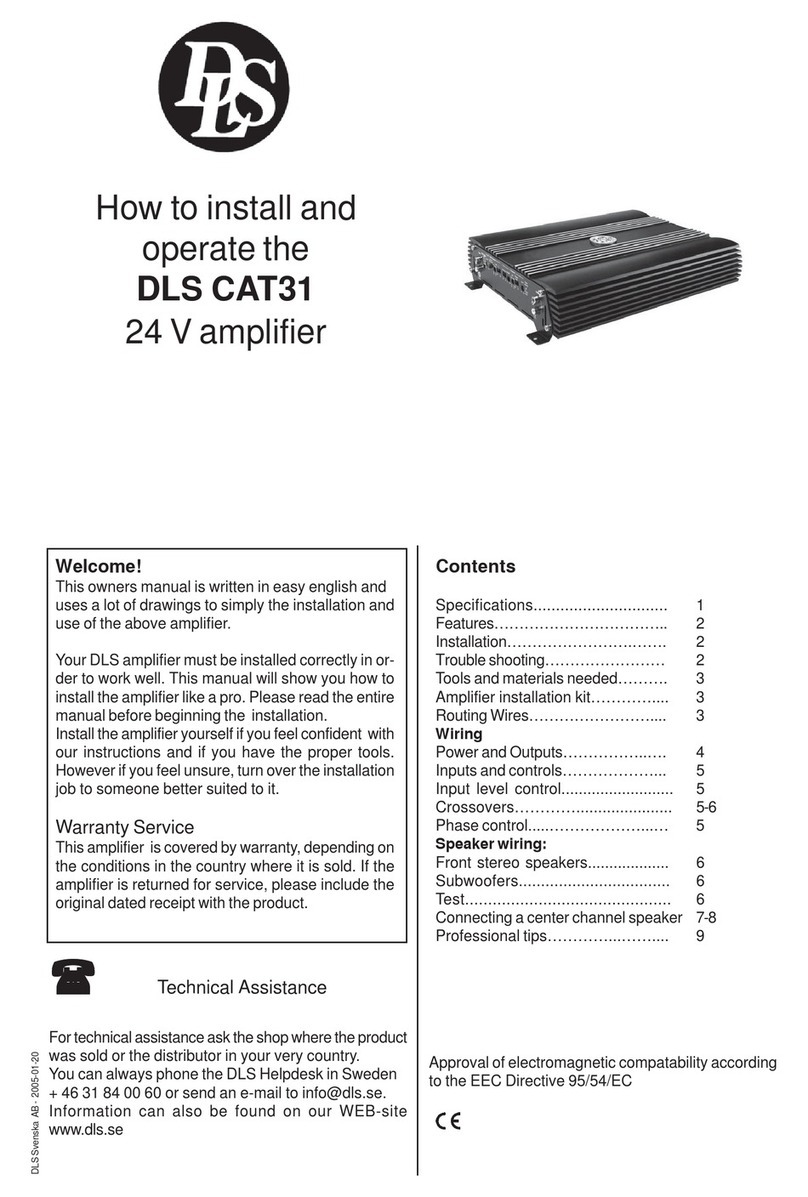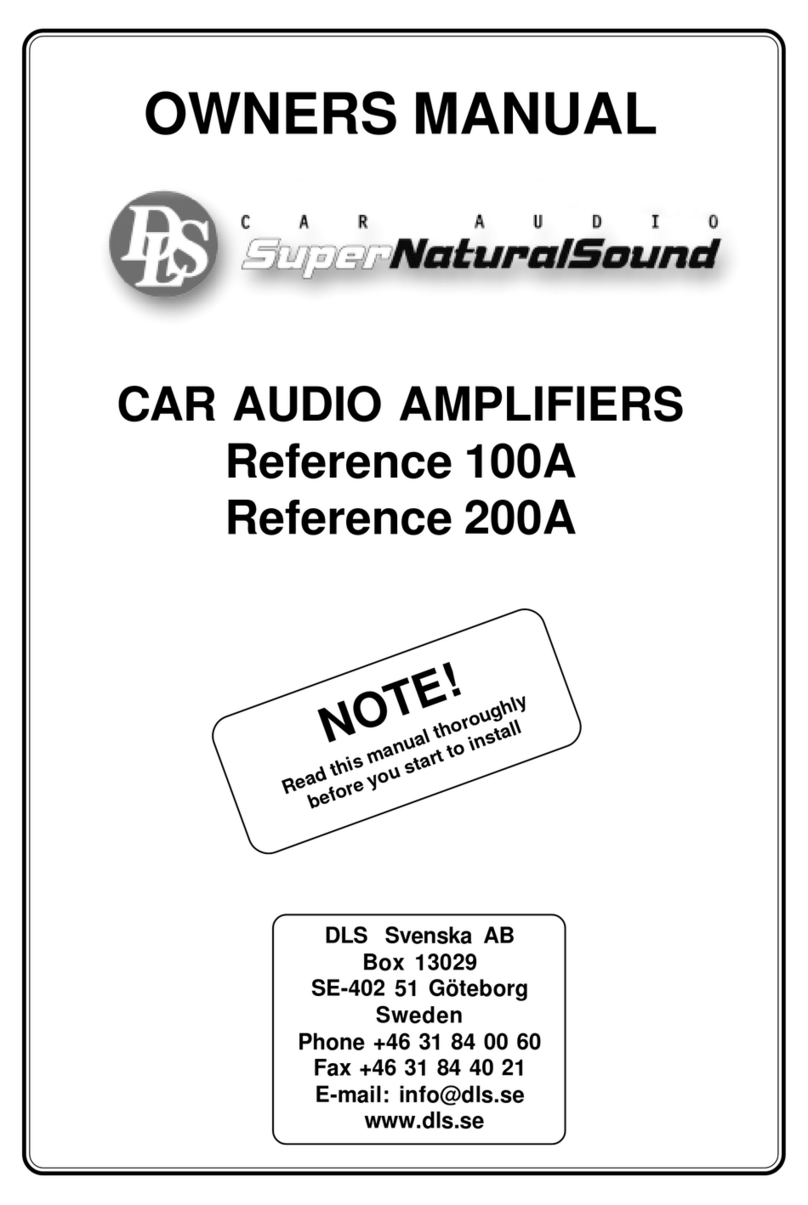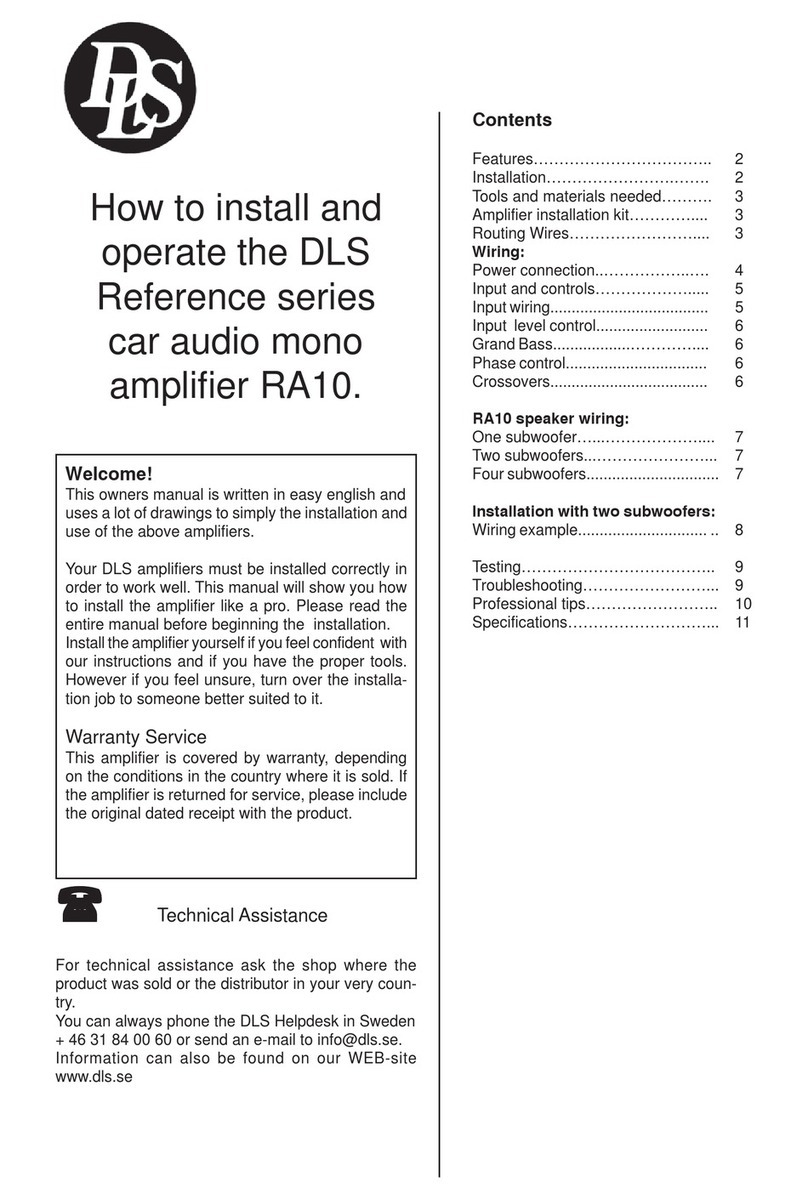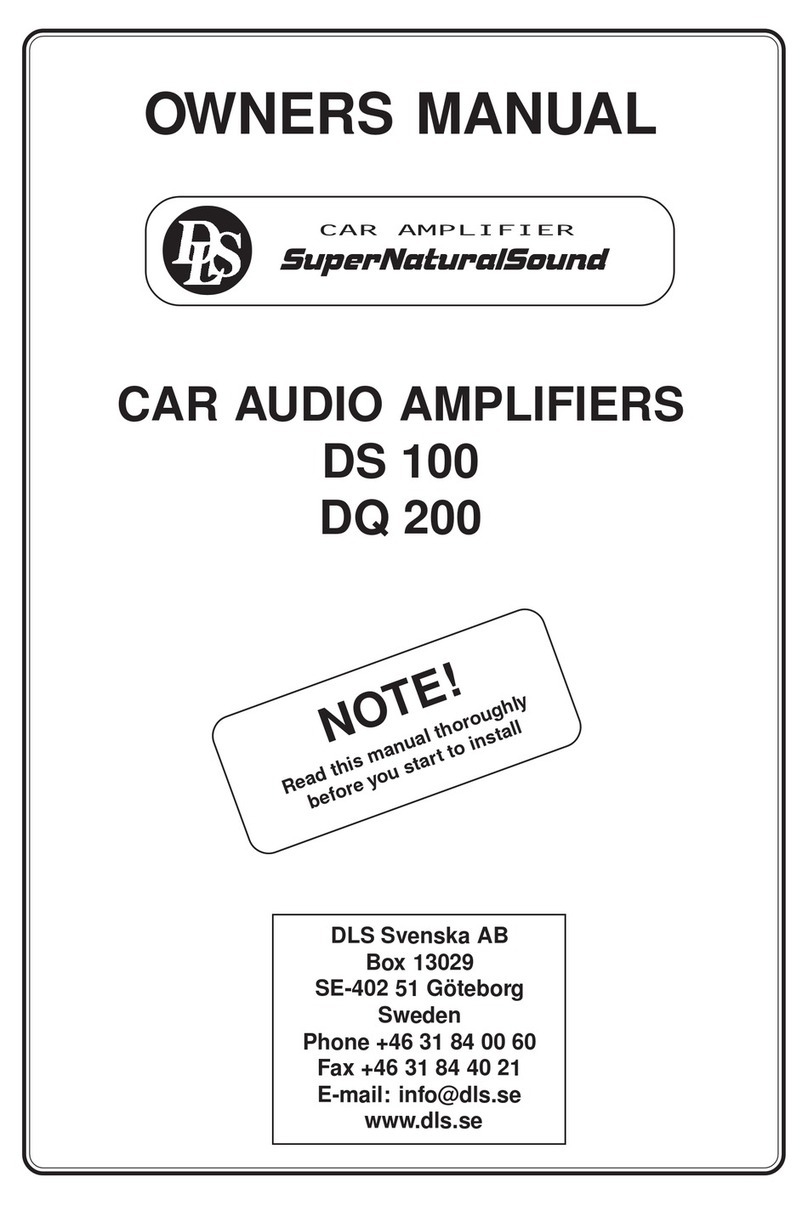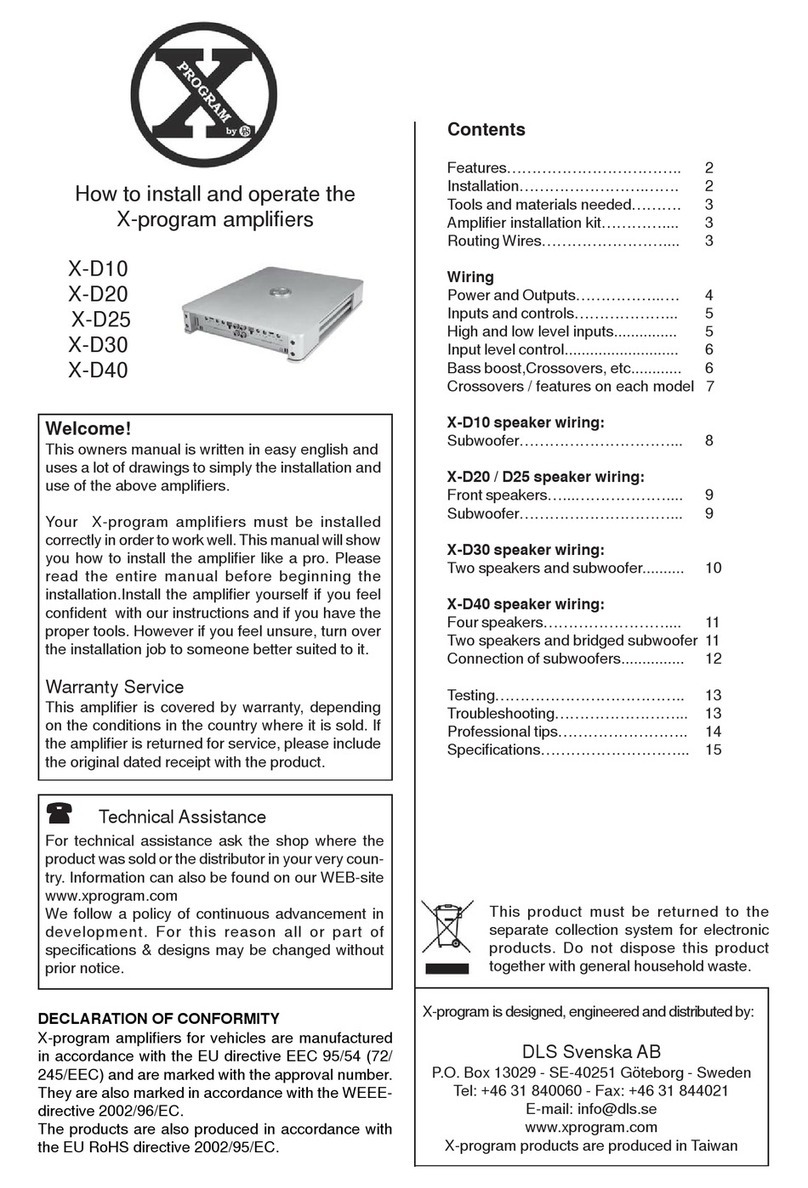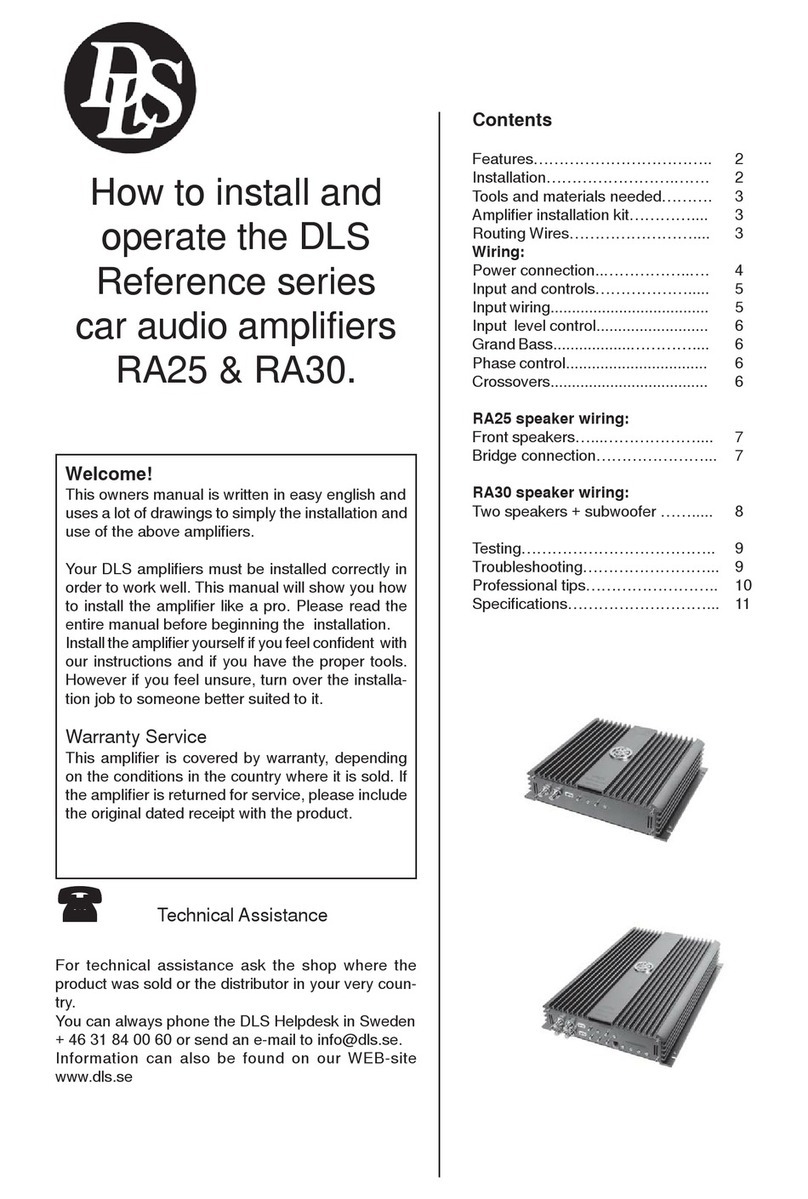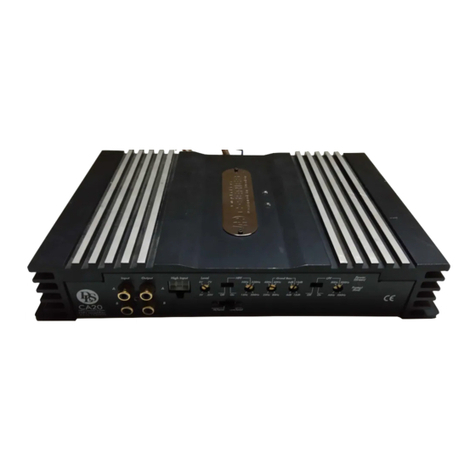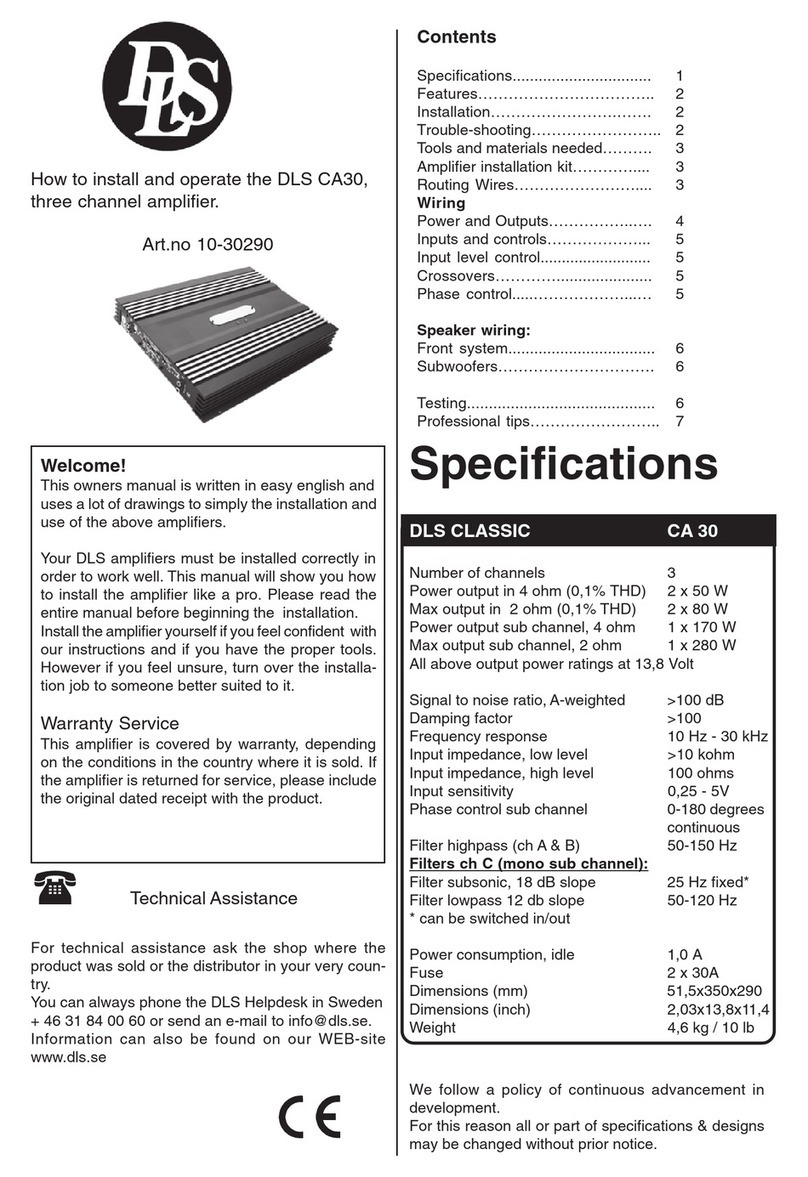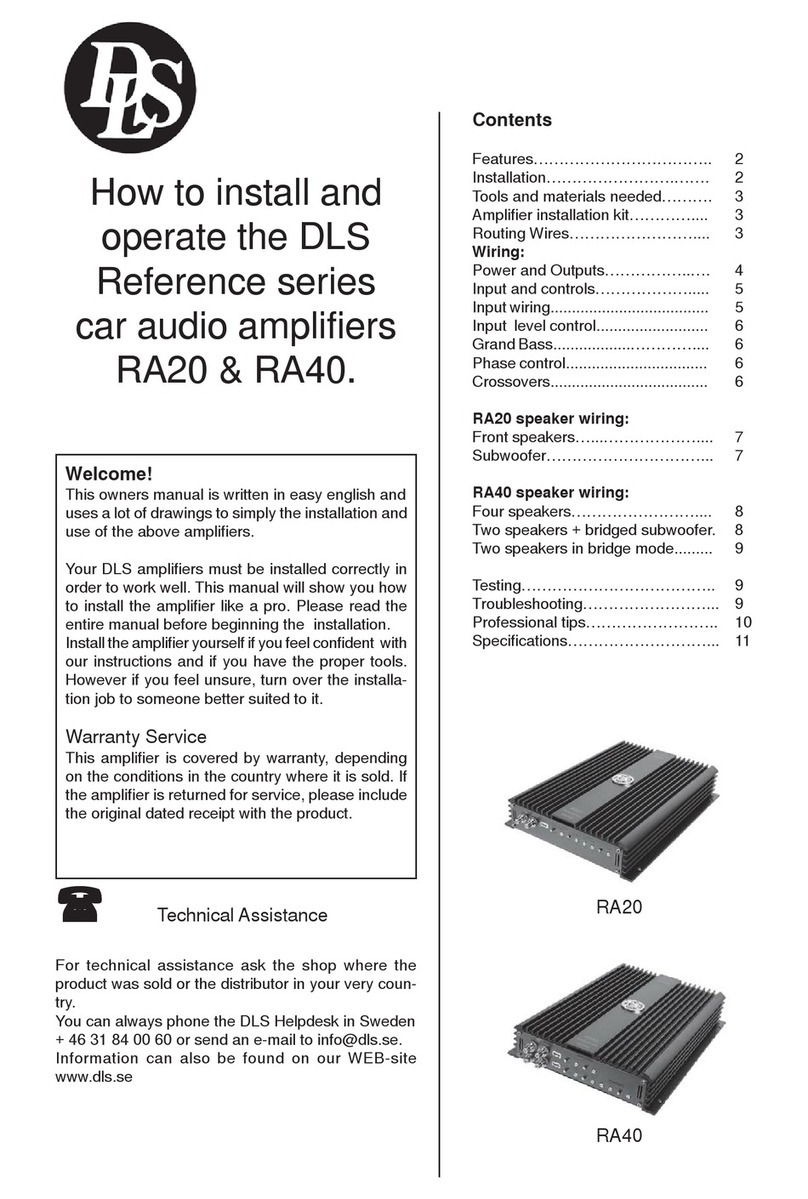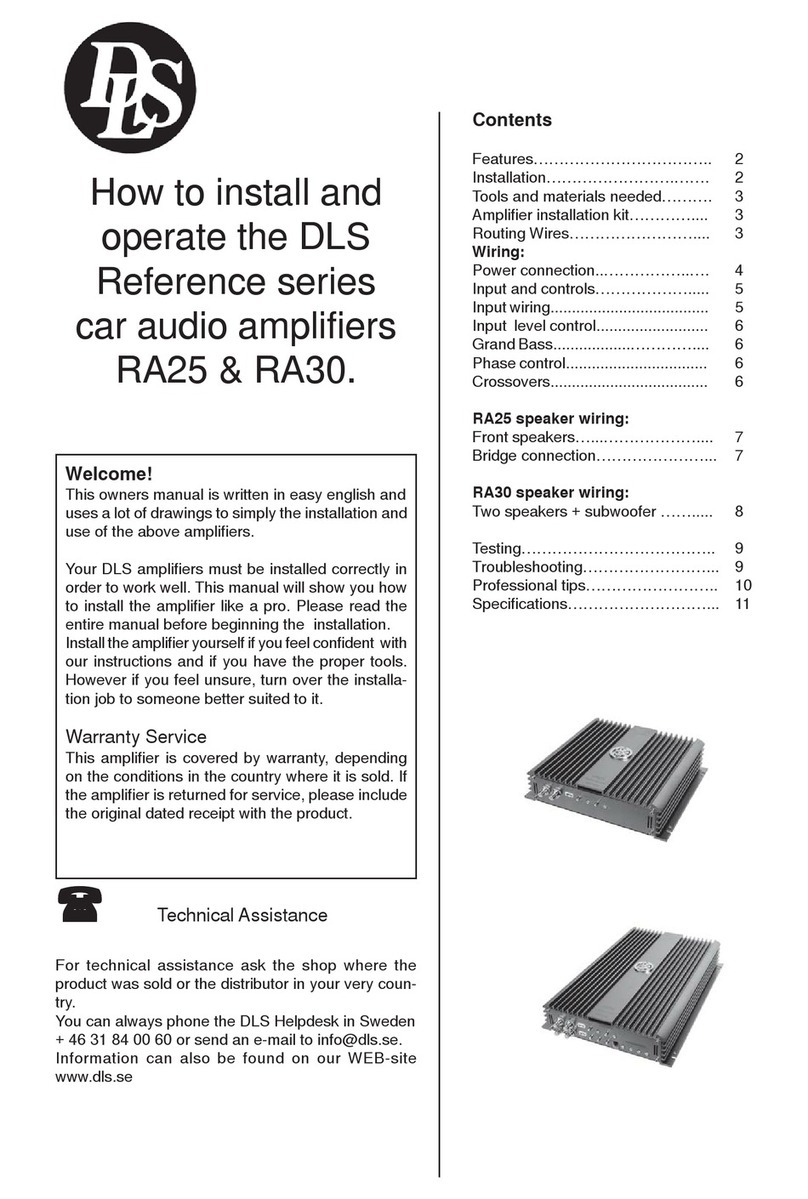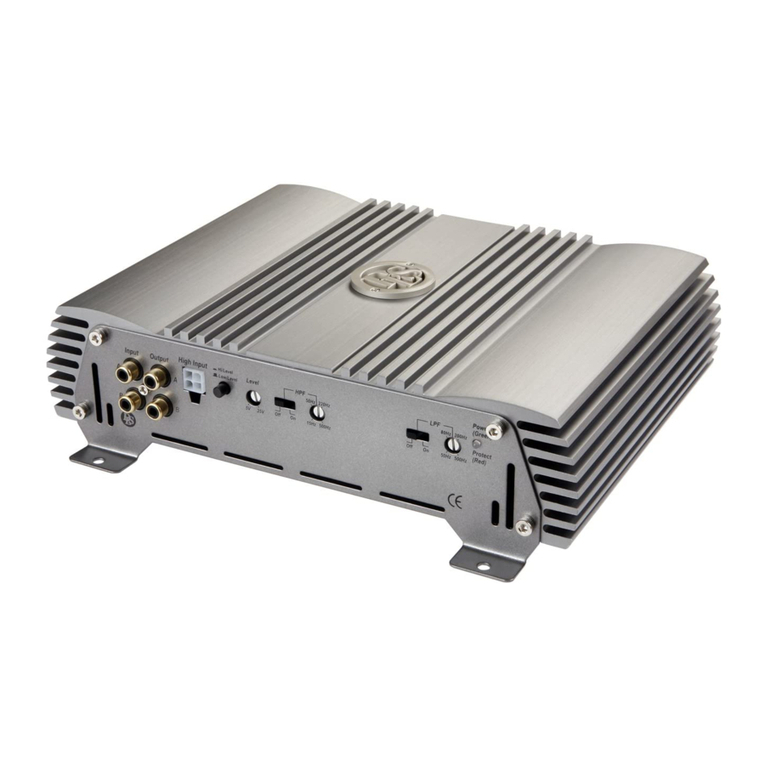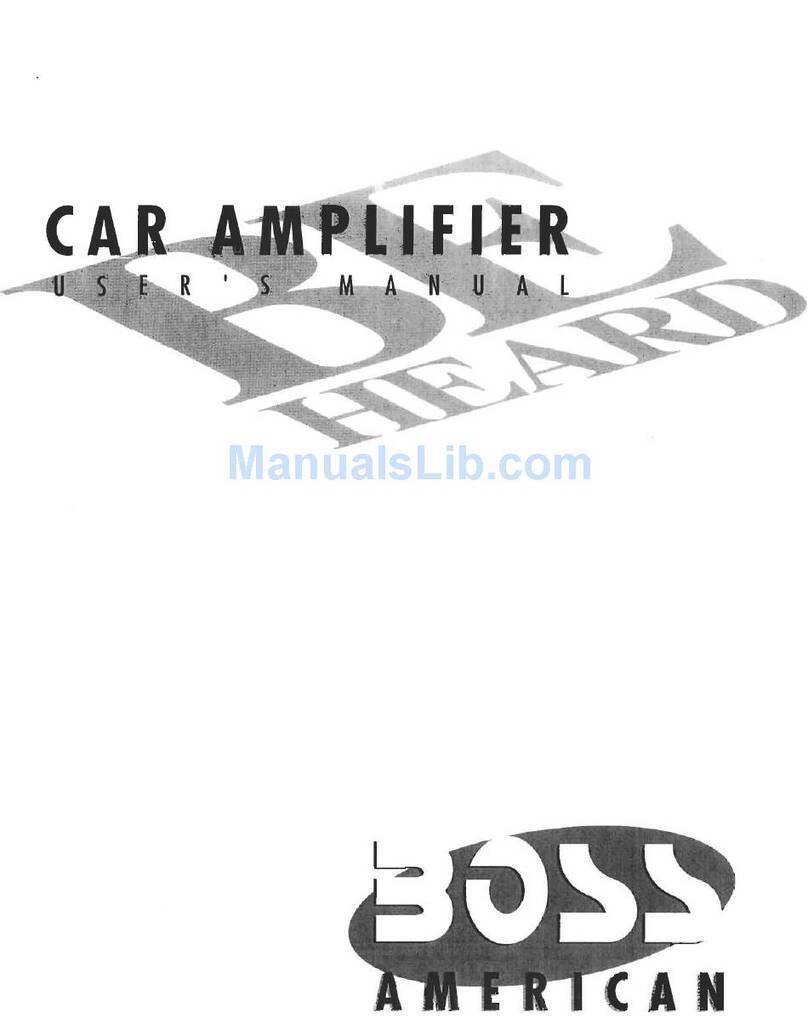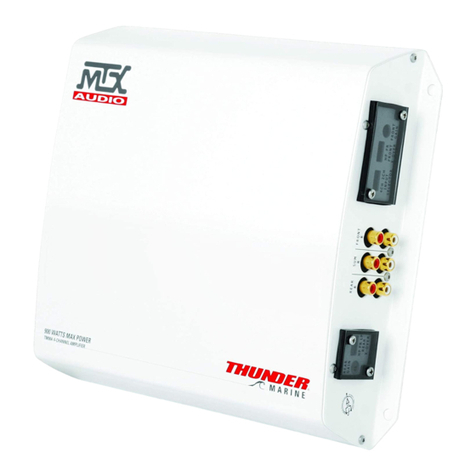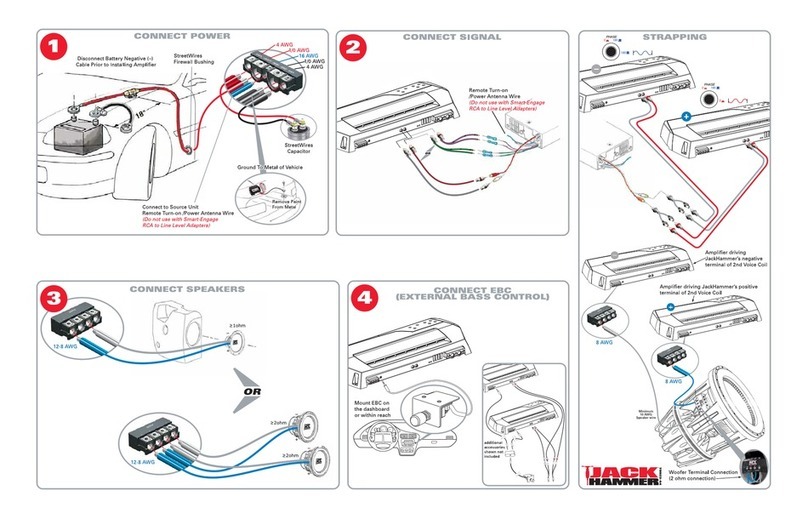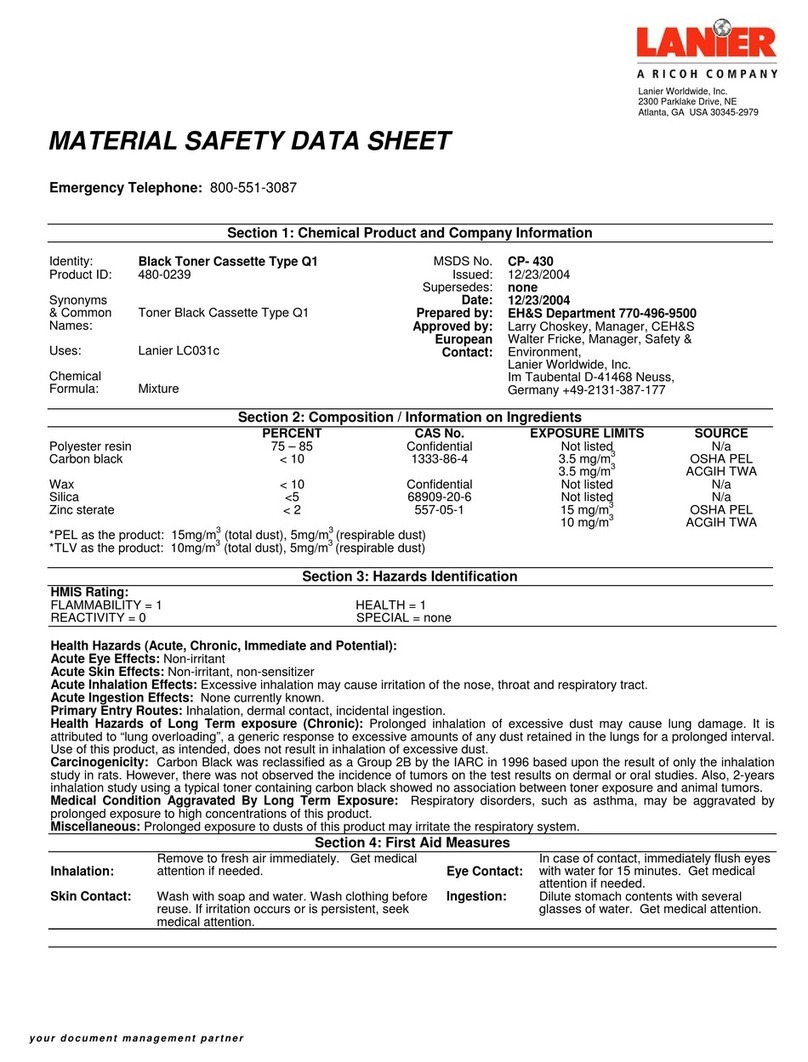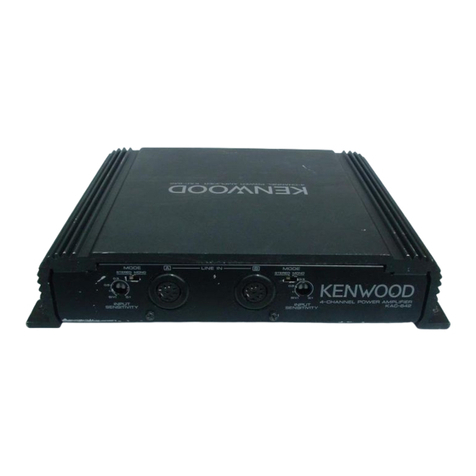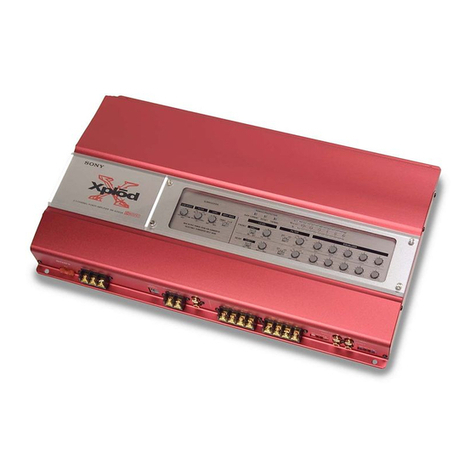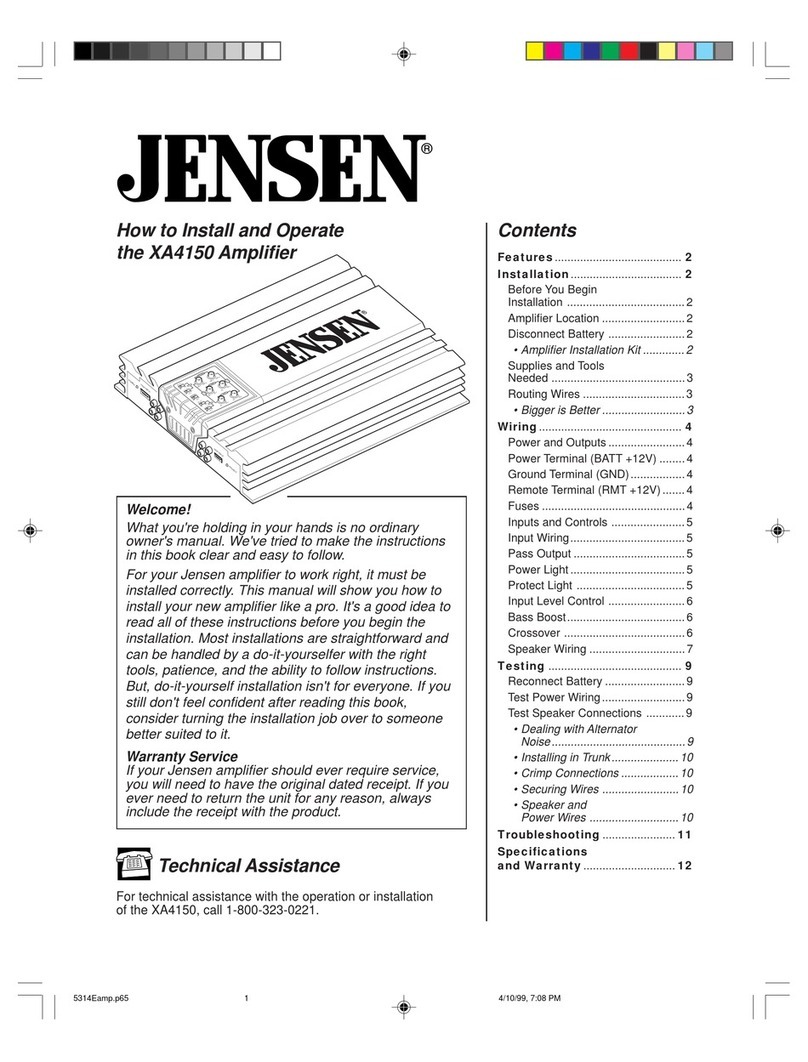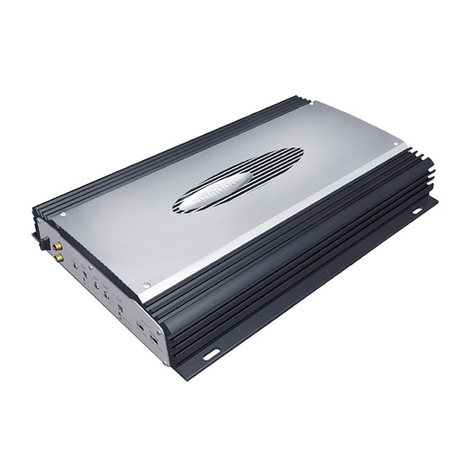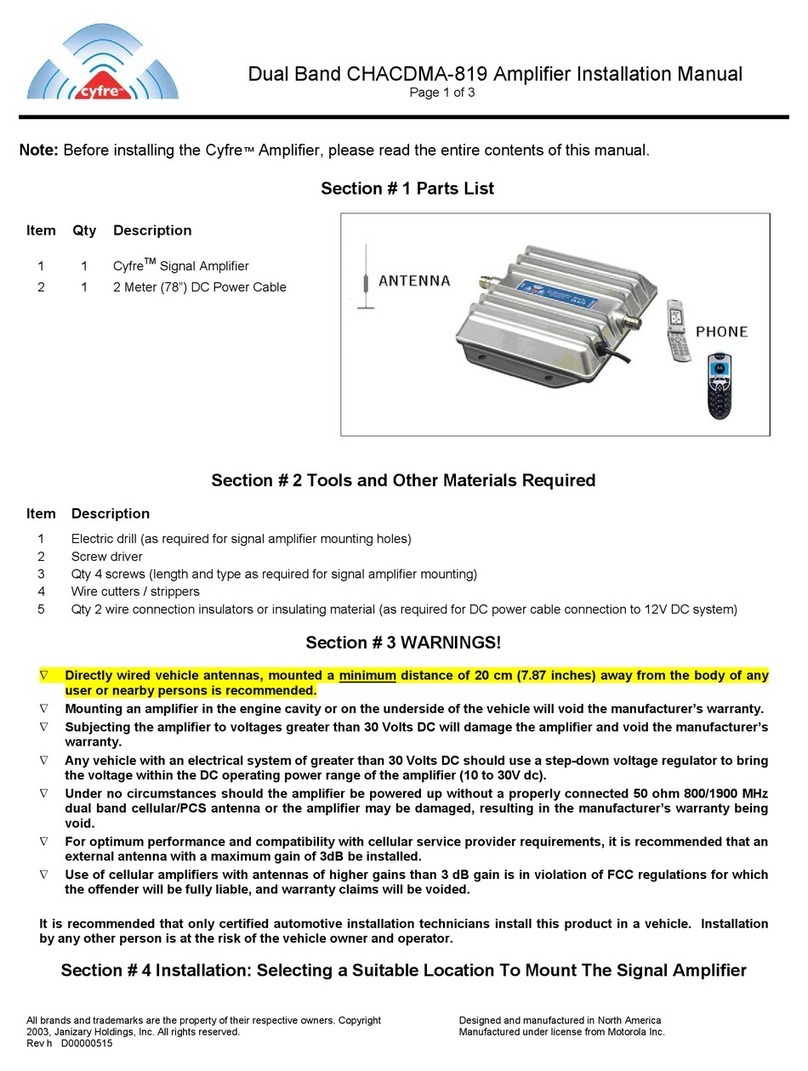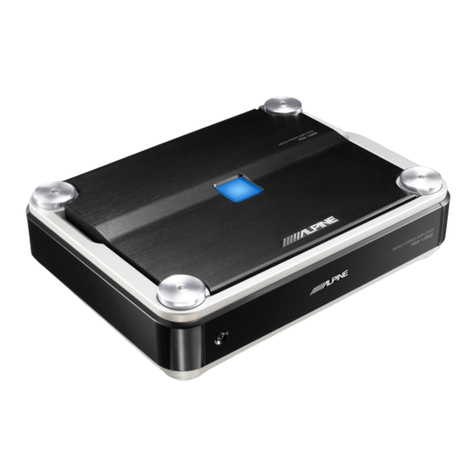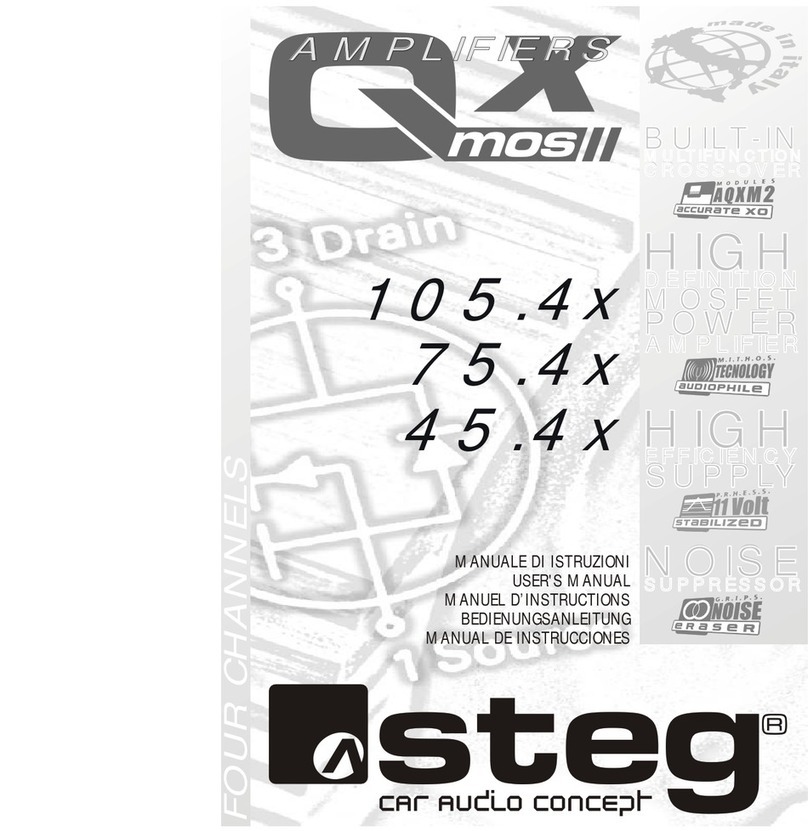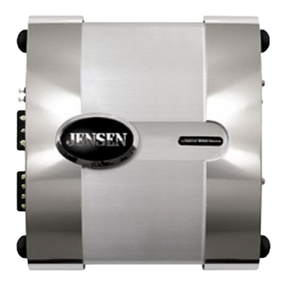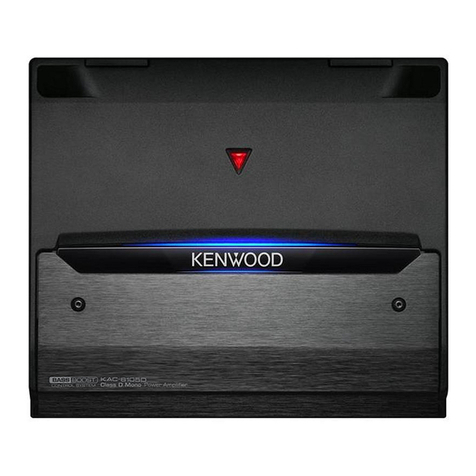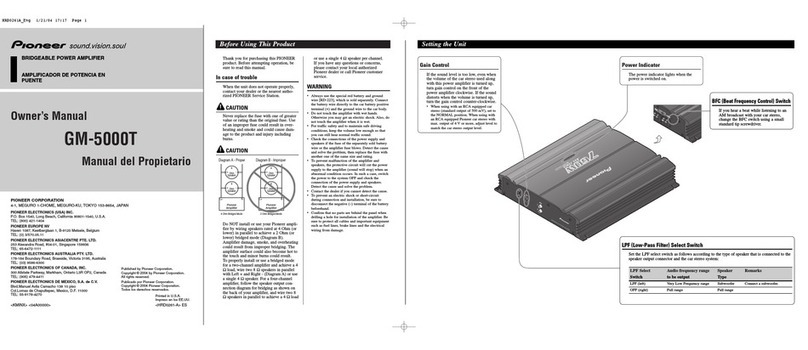2.3 SIGNAL CABLES
D 1000has two gold plated phono socket pairs. The
upperpair is usedto recieve thesignal from thehead
unit and the lower pair has a line out function if you
want to connect to more amplifiers.
Both inputs must recieve an input for full power out-
put.
Usehighquality interconnects liketheDLS SL5 PRO
or similar with an effective shielding that prevents
interference from the engine or alternator. When
using this cable you must run a separate wire for the
remote.
When you run the signal cables remember to keep
themwellspaced from thewiringloom and the power
feed to the amplifier to avoid picking up interference.
Lay the power cables and signal cables separated
on each side of the car.Any extra cable must be laid
in zig-zag style and definitely not coiled. Or cut it to
correctlenght.
REMOTE WIRE
Some signal cables include a thin wire for remote
amplifier start. High quality cables normally requires
a separate wire for this. Connect between the head
unitsremote cable (often the samecable that´s used
for automatic power antennas) and the REM-termi-
nal on the amplifier.
NOTE! If you want to start more than one amplifier
using the remote output, the current load might be
too high for som head units. High currents may
damage the head unit, check in the manual for the
head unit. Sometimes you must add a relay to the
remote circuit that takes care of the higher current. If
you are uncertain of how to connect the relay, ask
your local DLS dealer for advice.
2.4 SPEAKER CONNECTION
There are double speaker connections internally
connected to each other. The reason for having
double connections is for making it easier to
connect more than one speaker.
The gold plated terminals will directly recieve
speaker cables up to 6 mm2(9AWG). Always
use high quality speaker cables such as DLS
SC 2x2,5 or SC 2x4.
Connect the speaker + (marked with + or a red
dot) to the amplifier + terminal, and the speaker
- to the amplifier -.
When fitting the cables to the terminals, remove
only 10 mm of the insulation. Twist the wire
strand together and insert the wire after
loosening the terminal screw. Do not over tighten
as this can cut the cable strands. Use a 2 mm
hexagon key to the terminals.
SPEAKER POLARITY CHECK.
All speakers in a car audio system should be
connected in phase (the same polarity).All speaker
conesmustmove in thesamedirection. Out of phase
speakerswill cause a lack ofbass, and a poor stereo
soundstage.
Checking polarity:
Hold the - connection of the speaker wire to the -
terminalof a1,5 Volt flashlight battery.Tap the + wire
on to the + terminal of the battery, and observe the
movement of the cone. The cone should move
outwards when the wire touches the battery, and
inwardswhen the battery is removed. If itis theother
way around, the speaker has been connected
backwards and it must be removed and connected
correctly.
If your system also has a subwoofer connected
throughapassive6or12 dB crossover,try to connect
thiswithvarious polarity and judgewhatsounds best.
The phase shift in passive crossovers sometimes
makes it necessary to change polarity.
+
-
+
-
Battery
1,5
Volt
NOTE! Tweeters can not be tested this way, double
check the connections instead.
- 3 -
SPEAKER LOADS
Most car audio speakers have a 4 ohm impedance.
D 1000 can be loaded down to 1 ohm.
Whenloadedwithone4ohmspeakertheoutputpower
is350Watts. When loded withtwo4 ohm speakers in
prallel (2 ohm load) the output power is 700 Watts,
andwhenloaded with four 4 ohm speakers connected
in parallel the output power is up to 1000 Watts.
Onpage4youfinddifferentspeakerwiringexamples.
PROTECTYOUR CABLES!
Toprevent the cable insulationfrombeeing damaged
over sharp metal edges we recommend the use of
cable protection tubes or similar. A damaged cable
insulationcould causeseriousdamagetotheamplifier
not covered by any guarantee.
CABLING, SIGNAL CABLES, SPEAKER CONNECTION
